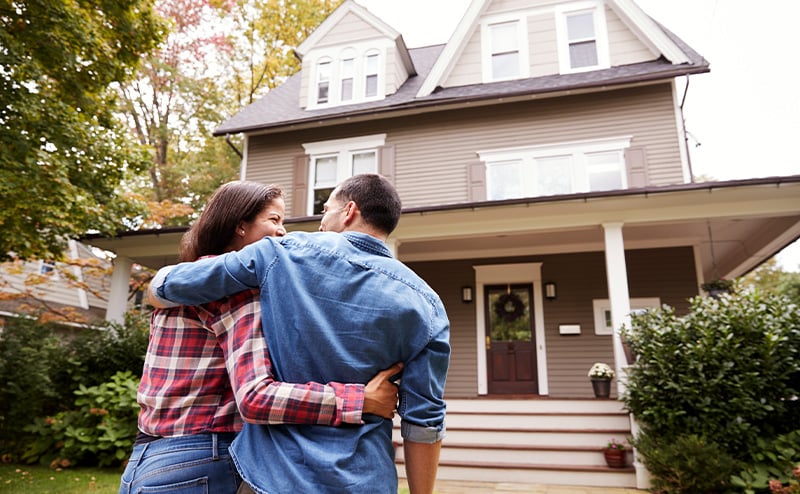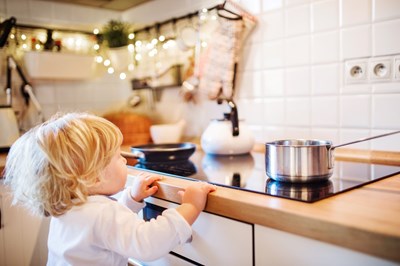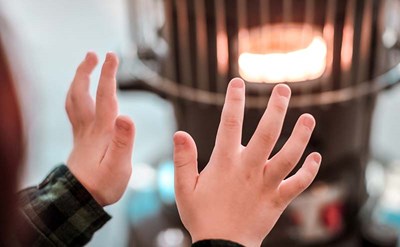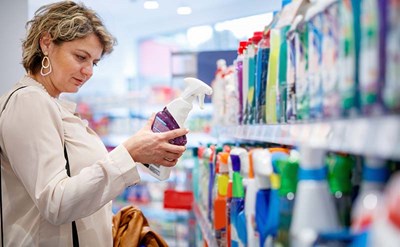Homes can have many hidden hazards that could be harmful to anyone – from babies to seniors. Thirty-three million people are injured by consumer products in the home each year, but most of these injuries are avoidable, so practicing prevention and hazard-proofing homes can save lives. People at different ages and those with disabilities may be more prone to certain types of injuries. Make sure you have a fully-stocked first aid kit readily available.
Emergency physicians treat preventable injuries every day and have the following recommendations to help you and your family stay safe.
Safety Tips for Any Home
- Keep emergency numbers on every phone; include fire, police, your doctor(s), ambulance service and the poison control hotline (1-800-222-1222).
- Make sure your house number is visible from the street.
- Install smoke detectors and carbon monoxide detectors on every floor. Change batteries twice a year when you change your clocks for daylight savings time.
- Eliminate clutter. Keep stairways and walkways clear of tripping hazards.
- Have regular inspections for your furnaces, hot water heaters and other gas appliances, as well as chimneys and flues.
- Never use kerosene or gas space heaters in unvented rooms, and never keep cars, motorcycles or lawn mowers running in a closed or attached garage.
- Be cautious when using ladders. Inspect for loose or worn parts. Use only on stable, level ground, and don’t overreach.
- Wear protective footwear and eyewear when mowing the lawn.
- Wear protective eyewear when operating power tools.
- Install decorative markers on glass doors so that people do not walk into them by mistake.
- Consider having a telephone connected to a land-line because cell phones run out of power, and their service may be interrupted in an emergency situation.
Home Safety Checklist for Children
According to the Consumer Product Safety Commission, approximately 4.5 million children are injured by hazards in the home each year. Parents should teach their children about safety at home, at school, on the playground and while traveling. This includes knowing their address and how to call 9-1-1. Never leave young children unattended.
- Cover all unused electrical sockets and keep electrical cords out of children’s reach.
- Install protective padding on the corners of furniture with sharp edges.
- Use safety latches and locks on cabinets and drawers.
- Protect children from dangerous areas. Install safety gates at the tops and bottoms of stairways. Place guards on banisters and railings if your child can fit through the rails.
- Secure tall bookcases, televisions, or other pieces that might tip over.
- Use window guards and safety netting to help prevent falls from windows, balconies and landings. (If window guards are used, ensure that at least one window in each room can easily be used as an exit in case of fire.)
- Tie up vertical blind cords.
- Install doorknob covers on entry doors so small children can’t leave the house unattended.
- Use nightlights, but keep the small plastic bulbs out of reach of children.
- Remove rubber tips from door stops, so children cannot choke on them, or install one-piece doorstops.
- Pay attention to all equipment recalls, including those for “hand-me-downs.”
- Store drugs and chemicals, such as cleaning products and bleach, out of reach and in their original containers to ensure proper knowledge of contents.
- Buy medicines, vitamins and household products with child-resistant caps.
- Keep toys with small parts (and other small objects) out of the reach of toddlers and young children. If the object can fit easily into the cardboard center of a roll of toilet tissue, the object can pose a choking hazard.
- If you own any firearms, always store unloaded and locked. Firearms and ammunition should be stored separately.
- Remove any houseplants from children’s reach.
Specific to kitchens
- Turn pot handles inward on stoves or place pots on back burners.
- Store glass objects or appliances with sharp blades out of reach.
- Keep plastic bags—garbage bags, sandwich bags, dry-cleaning bags, grocery bags—out of reach.
Specific to Bedrooms
- Use a crib that meets current standards and has a firm, tight-fitting mattress so that your child cannot slip between the crack and the crib side.
- Ensure that crib slats are less than 2 3/8 (6 centimeters) apart.
- To avoid risk of suffocation, never place blankets, pillows or extra stuffed animals in crib.
- Never place babies to sleep in adult beds, as it puts them at risk for suffocation or strangulation.
- Make sure toy chests are non-locking and that lids have lid supports to keep them from slamming closed.
Specific to Bathrooms
- Install emergency releases on the outsides of your bathroom and bedroom doors, or cover or remove locks so children cannot lock themselves in.
- Set your water heater at a temperature no higher than 125º Fahrenheit to prevent scalding.
- Unplug curling irons, hair dryers and electric razors when not in use.
- Lock up any bottles of mouthwash, perfume, hair spray or nail polish. Also any scissors, razor blades or sharp tools.
- Install nonskid strips in bathtubs.
- Verify that outlets have grounded circuit breakers.
Outdoors
- Keep walkways clear of clutter.
- Remove ladders when an above-ground pool is not in use.
Inspect swing-sets to make sure they are free from rust or sharp edges. - Keep young children away from lawn mowers and other sharp garden equipment.
- If you have a swimming pool, install a four-sided fence with an automatic “child proof” gate.
Fire Safety
- Keep fire extinguishers on every floor and in the kitchen.
- Store matches and lighters in a locked cabinet.
- Keep an emergency ladder for upper levels of your home.
- Develop and practice a fire escape plan.
Home Safety Checklist for Older Adults and People with Disabilities
Adults over age 65 are particularly vulnerable to falls and poisoning. Diminished eyesight, hearing and physical stability all play a part. To help minimize the chance of your loved one getting hurt:
- Arrange furniture to create clear pathways and reduce the risk of falling.
- Install grab bars and other safety devices to assist with getting in and out of bathtubs or showers.
- Be sure the bottom of the tub or shower has a non-skid surface.
- Install an elevated toilet seat.
- Consider using a panic button (as a pendant, wristband or necklace).
- Remove clutter. Don’t leave objects on the stairs or on walkways.
- Remove throw rugs. Tack down other rugs to avoid tripping.
- Install and secure handrails and banisters on both sides of stairs.
- Install nightlights in the bedroom, hall and bathroom. Be sure the tops and bottoms of stairs are well lit.
- Install nonslip treads on bare wood steps.
- Repair loose stairway carpeting or boards.
- If there is more than one person in the household taking the same or similar medication, consider using color-coded medicine caps to prevent mixing the dosages.
 American College of Emergency Physicians
American College of Emergency Physicians







